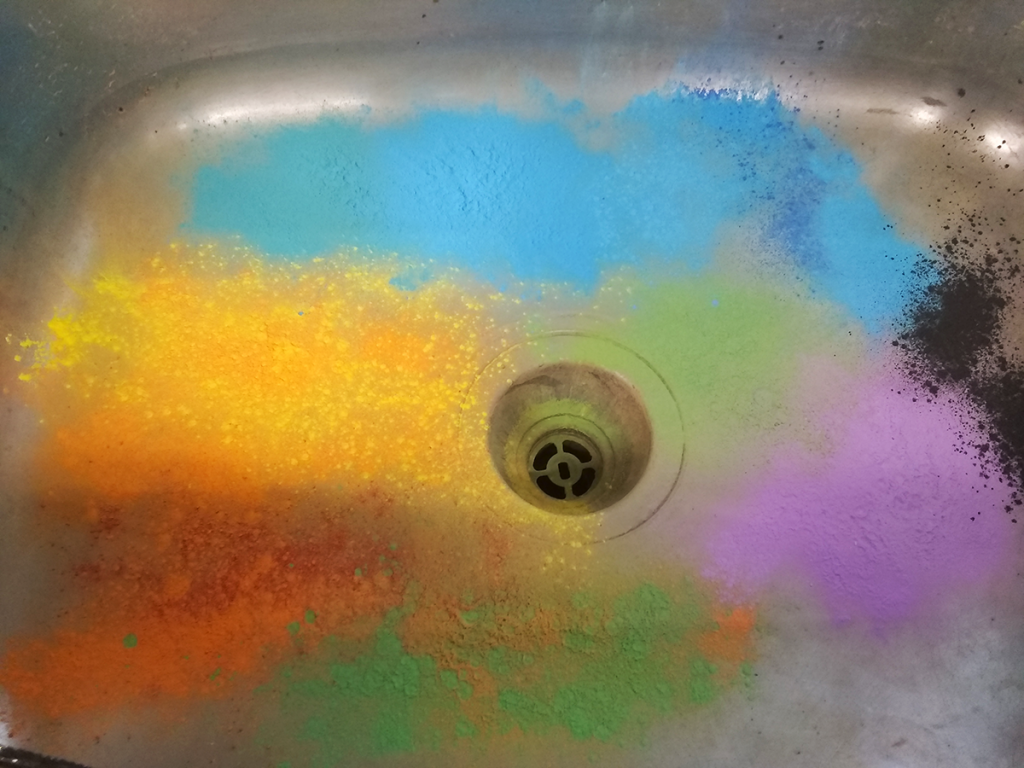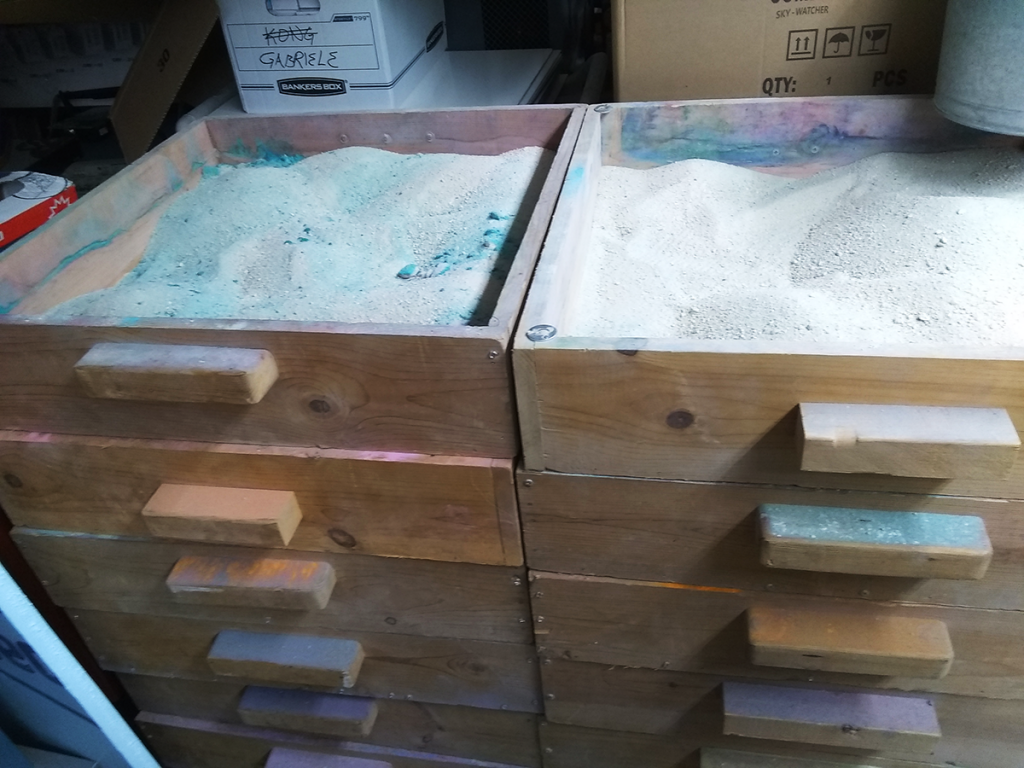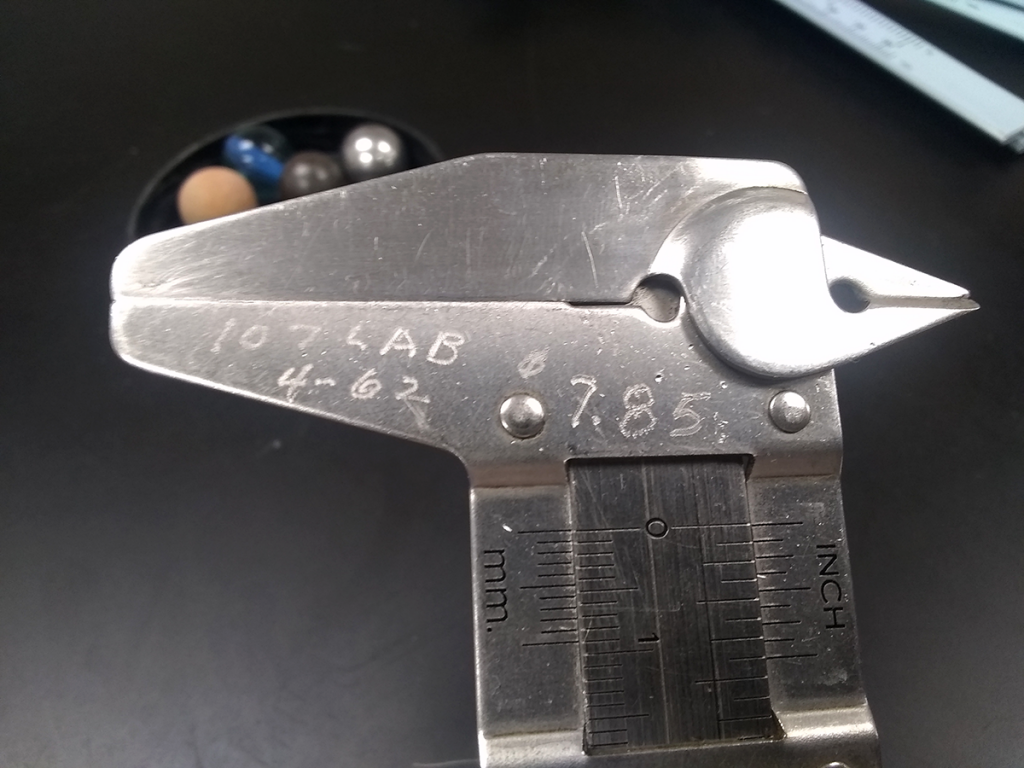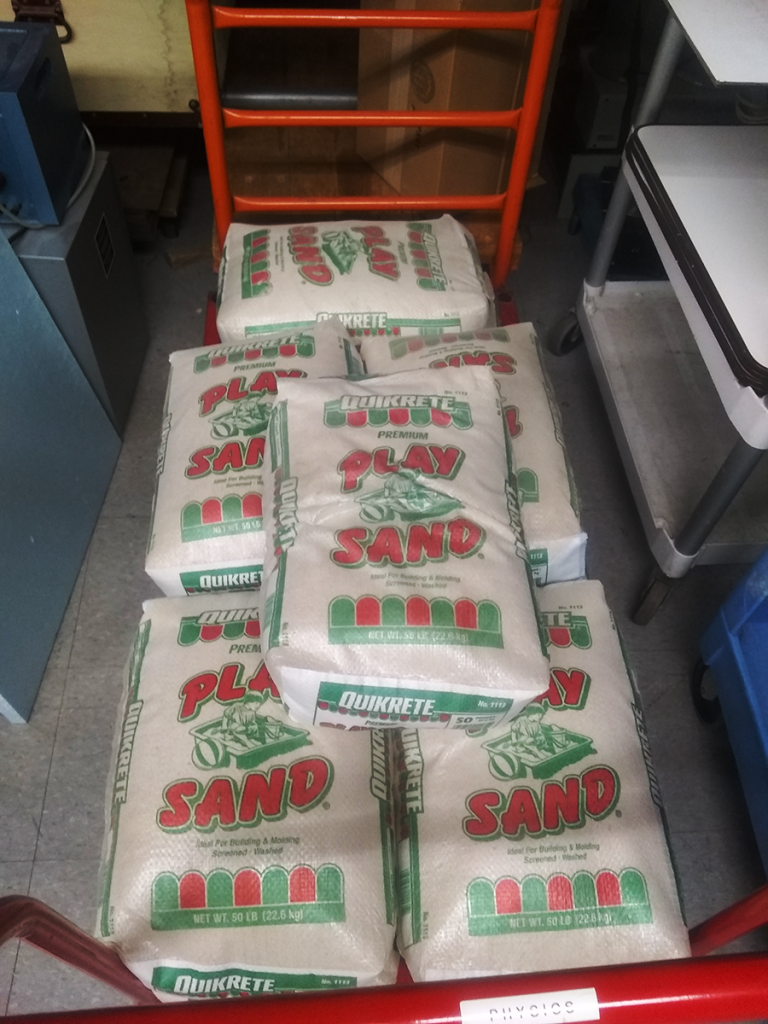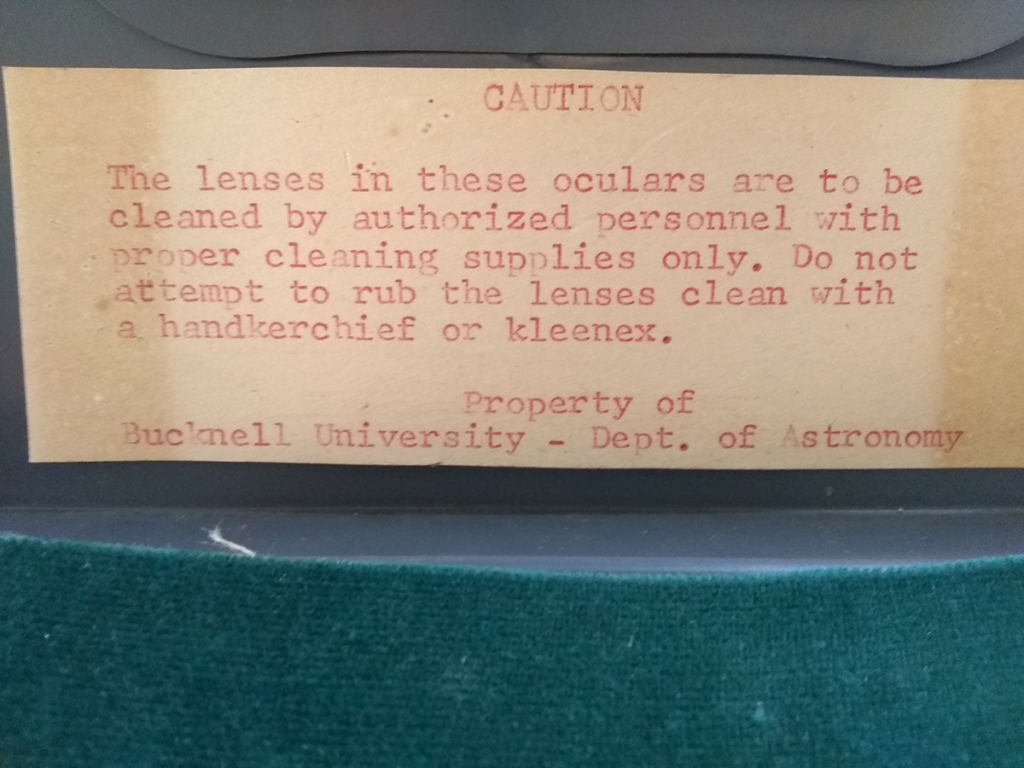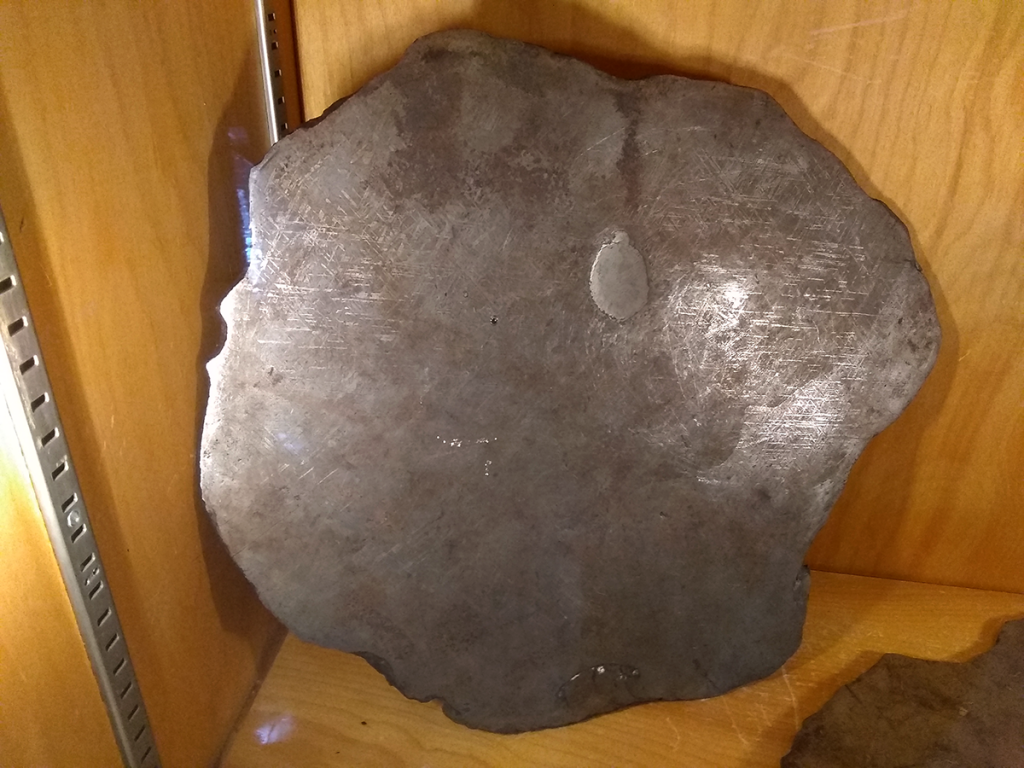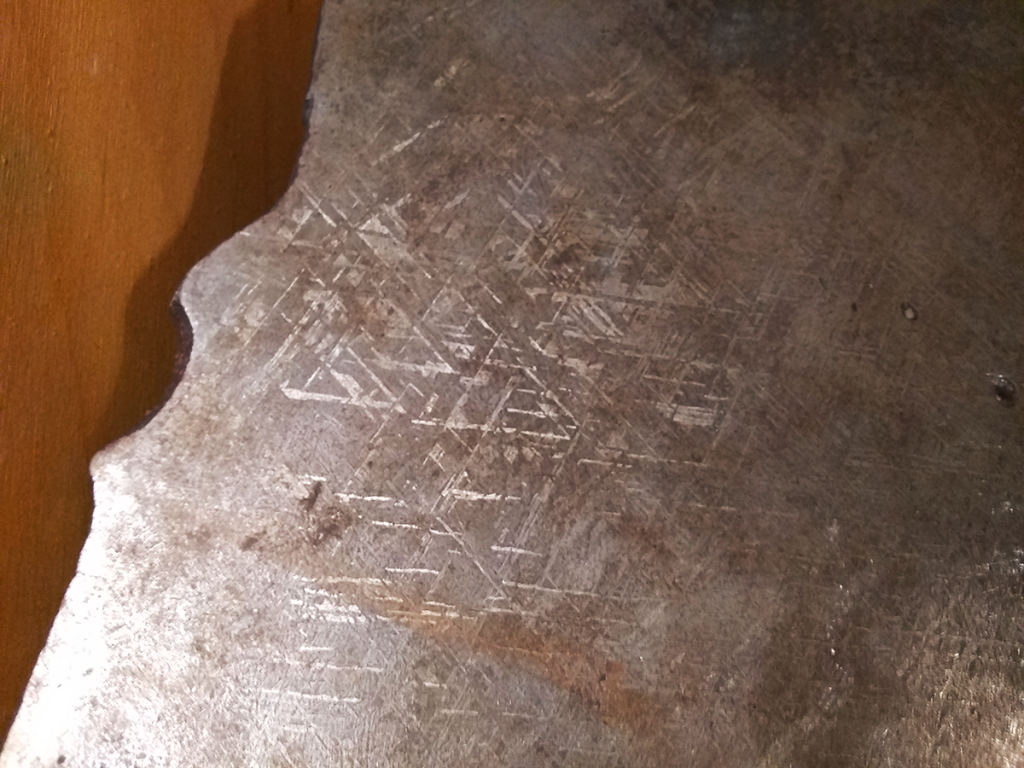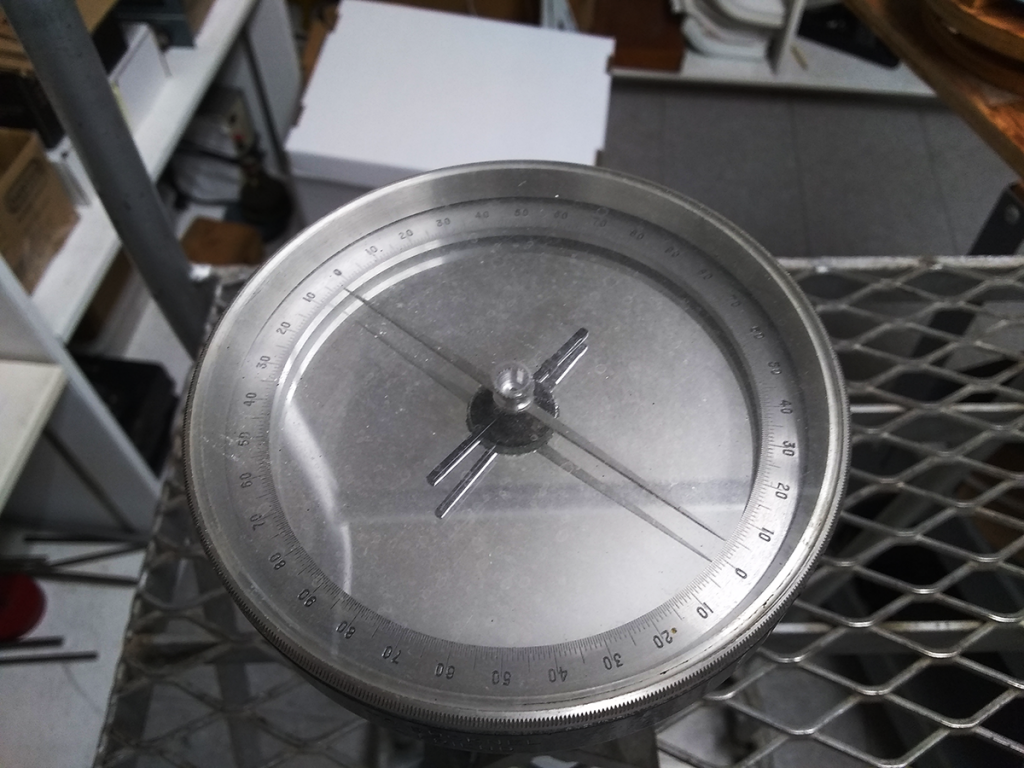
We have many, many compasses scattered about the department. The vast majority come and go as part of the toy kits for PHYS 212, tiny ones useful for illustrating the effects of magnetic fields. Probably more that than for wilderness orienteering. Note: a physics toy kit, despite its educational and entertainment value, is probably insufficient on its own for wilderness survival. Check with the fine folks at Outdoor Education & Leadership for that.
One of the entertaining compass demos is to array a circle of them around an unshielded wire, and seeing the effect of turning the current on and off. Half a dozen little red arrows snapping to attention never loses its neat-o quality.
There’s also this little gem, tucked away in one of our closets. Inscribed with a nice little dedication, reading “TO BUCKNEL / A FRIEND” on the side. Which, the longer you look at it, seems a little less clear each time.
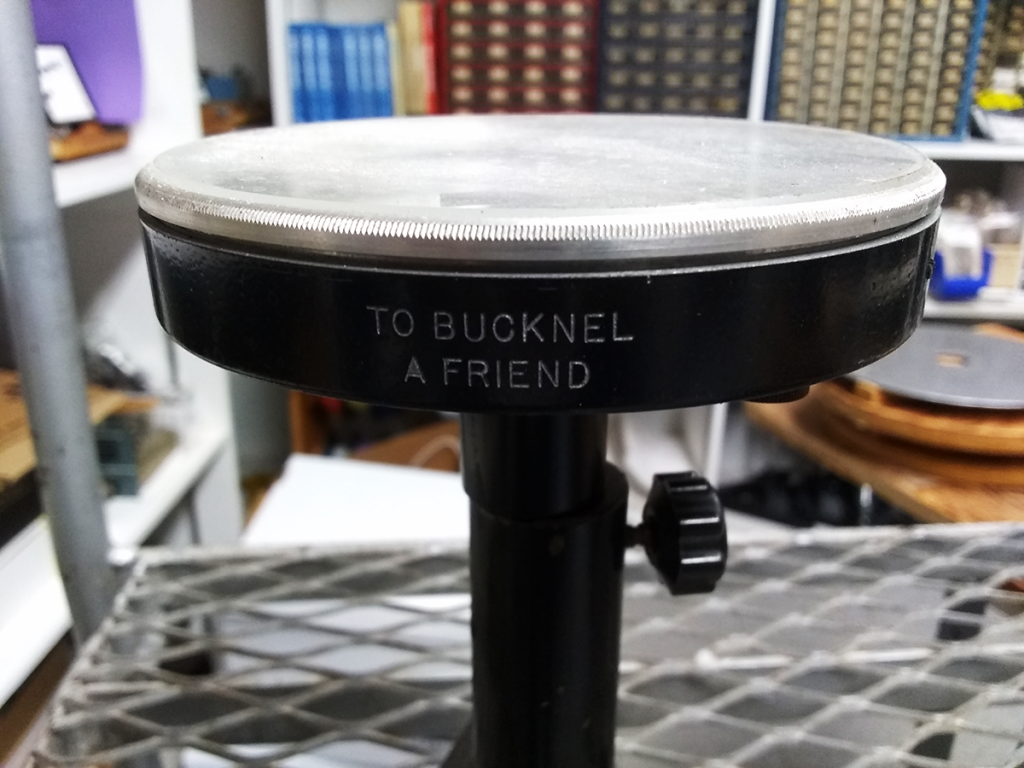
Maybe you had to be there? Interpret it as you will.
